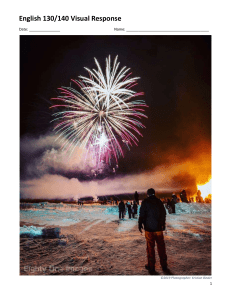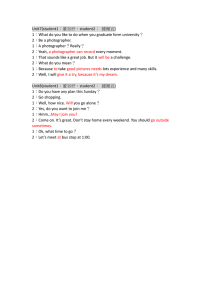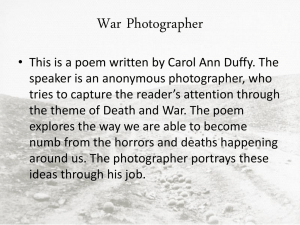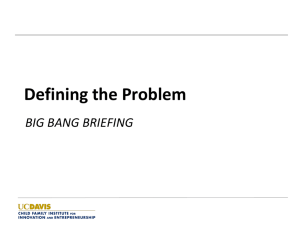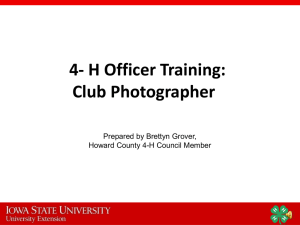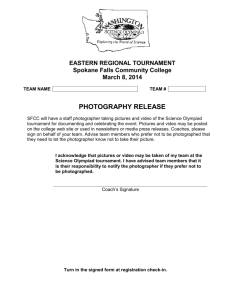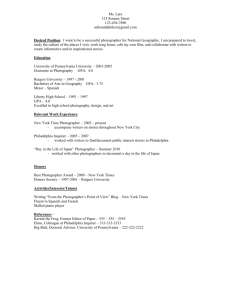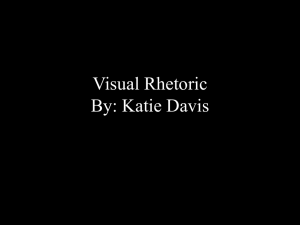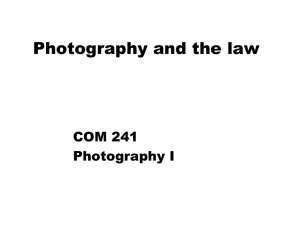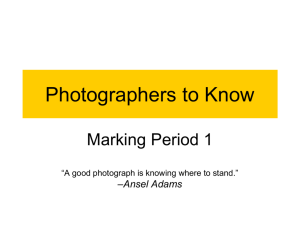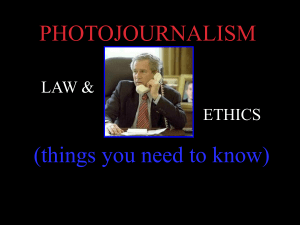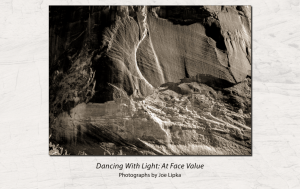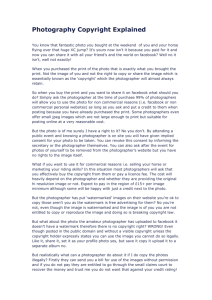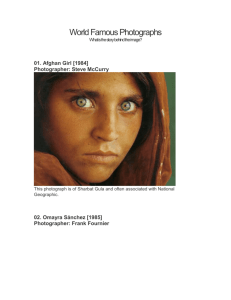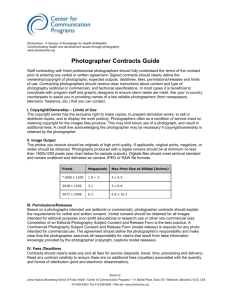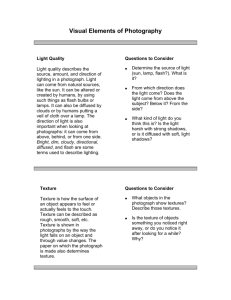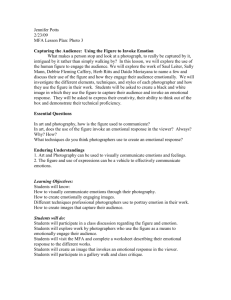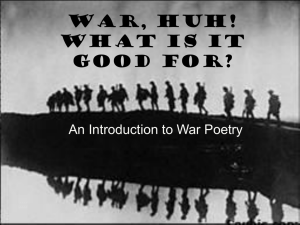Guideline: judging good pictures
advertisement
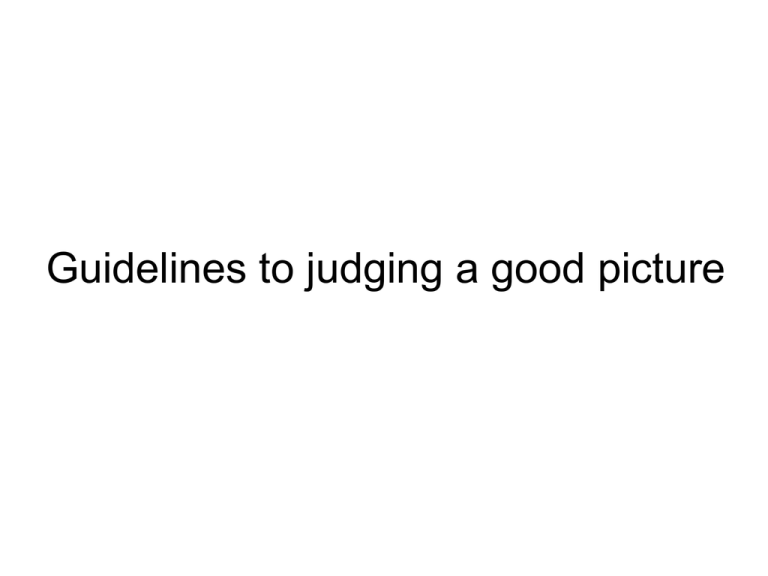
Guidelines to judging a good picture 1. Purpose A good photograph originates with a specific purpose in the photographers mind before they snap the shutter. What was the photographer trying to do? Tell a story? Stimulate interest? Arouse an emotion? Record an event? Inform or Instruct? 2. Effectiveness Was the photographer successful in achieving the original purpose? 3. Audience Appropriate for the intended viewer? A mass public audience or special interest? 4. Revelation Does the photographer lead the viewer to a new level of understanding of the subject? Is the viewer led to a fresh insight? New information? A unique perspective? 5. Value Was the picture worth the effort? Does the photo have much value to the mass publication audience? 6. Technical Clean? Sharp? Focus? Density? Contrast? Grain? Dust? 7. Contribution To what extent did the photographer contribute to the photograph? Did the photographer make the picture or did it make itself? 8. Originality Is the central idea of the photo original? Is the treatment of the of the subject unique in some way? 9. Control of medium Was this a lucky shot? Is it clear that the shot resulted from competent use of the medium by the photographer? 10. Composition Does the content within the picture show pleasing elements of composition? Rule of thirds. 11. Compromises What limited your options? Gave up too soon? 12. Translation Can the picture be translated into words easily? Can it's story be told? 13. Impact Does the photo command attention? Does it cause you to linger? Or feel emotion? 14. Interest Do we feel the need to explore it's contents? Do we require more then a glance to obtain its full value? Are we inclined to return to it?
![[YOUR NAME] [date]](http://s2.studylib.net/store/data/012020267_1-80858c0f5a6b44d384246f7e0c73e2bd-300x300.png)
